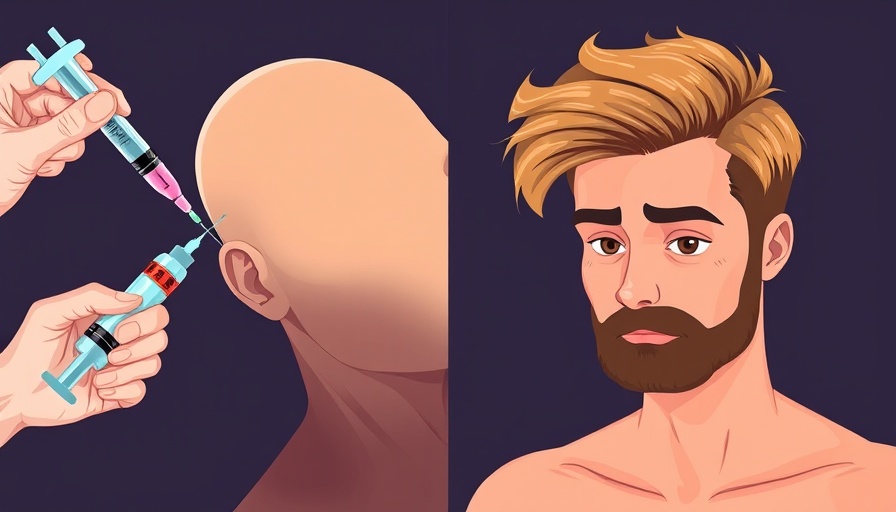
Understanding PRP Treatment for Male Pattern Hair Loss
As men grapple with the challenges of hair loss, various solutions have emerged, but few generate as much debate as Platelet Rich Plasma (PRP) therapy. Known for its potential in addressing male pattern baldness, PRP is often hailed by some as a miracle treatment while others deem it ineffective. To truly grasp its benefits and drawbacks, we must delve into what PRP is and how it functions.
In 'Does PRP Work For Hair Loss In Men?', the discussion dives into the effectiveness of PRP therapy for male pattern baldness, prompting us to further analyze the treatment's efficacy and its place in hair restoration.
The Science Behind PRP: How It Works
PRP is a regenerative medicine approach that utilizes a patient's own blood to promote healing and stimulate hair follicles. The process begins with a blood draw, from which the blood is spun in a centrifuge to separate its components. This isolation process allows practitioners to extract a concentration of growth factors and proteins from the plasma that are believed to support tissue regeneration.
Once prepared, this PRP is injected back into the scalp, specifically targeting areas experiencing hair thinning. The injections encourage hair follicles to stay in the growth phase, although responses to treatment can vary significantly among individuals.
Clinical Evidence: A Mixed Bag
Amongst medical experts, the acknowledgment of PRP’s effective rate rests upon varying studies. Out of ten trials assessing PRP's effectiveness on male alopecia, six reported positive results while four did not. This inconsistency led some researchers to cite an overall success rate ranging from 25 to 43 percent.
The small sample sizes of these studies also draw criticism. The largest trial featured only 75 participants, emphasizing the need for larger-scale research to solidify any claims regarding its efficacy. Consequently, many hair specialists recommend seeking PRP treatment as a last resort, especially for individuals who have exhausted conventional therapies like Minoxidil or Finasteride.
The Cost Consideration: Is It Worth It?
Financially, PRP treatments can be quite an investment. Costs can soar from a few hundred to several thousand dollars, depending on the clinic and location. These expenses can be a significant concern for patients already battling self-esteem issues due to hair loss. Additionally, the nature of the procedure is relatively invasive, requiring not only blood draws but also multiple scalp injections, which can be painful.
Benefits vs. Drawbacks: Weighing Your Options
As with any treatment, understanding the pros and cons is crucial. The key benefits of PRP include the reduced frequency of clinic visits compared to daily topical applications or medications. Moreover, because the treatment derives from the patient’s own body, it minimizes the potential for serious side effects associated with pharmaceuticals.
However, the unpredictable outcomes alongside the costs can be disheartening. Some men may experience significant improvement in hair growth, while others might find it ineffective, leading to considerable financial disparity with no guaranteed results. Therefore, consulting with a knowledgeable hair loss expert can guide potential patients through the complexities of PRP and whether it is a fitting option for their situation.
Addressing Common Misconceptions About PRP
There are many myths surrounding PRP therapy which often lead to unrealistic expectations. A common misconception is that PRP is an instant fix. In fact, it takes multiple sessions over several months, and patients must understand that results may take time to realize.
Furthermore, some believe that PRP is a standalone solution; however, combining it with other treatments could yield better outcomes. This holistic view emphasizes the need for an individualized treatment plan under professional guidance.
Conclusion: Making an Informed Decision
Ultimately, the decision to pursue PRP treatment for hair loss is a personal one and should be approached with care. Patients are encouraged to consider all available treatments, weigh costs against potential benefits, and ideally discuss their options with esteemed medical professionals in the field. Education is key—knowing the facts surrounding PRP can empower men to make informed choices regarding their hair restoration journey.
For those seeking personal growth and strategies to handle the emotional aspects of hair loss, consider checking out online learning platforms like Skillshare. They offer a range of courses that promote self-confidence and personal development, which could complement your journey toward hair restoration.
 Add Row
Add Row  Add
Add 




Write A Comment